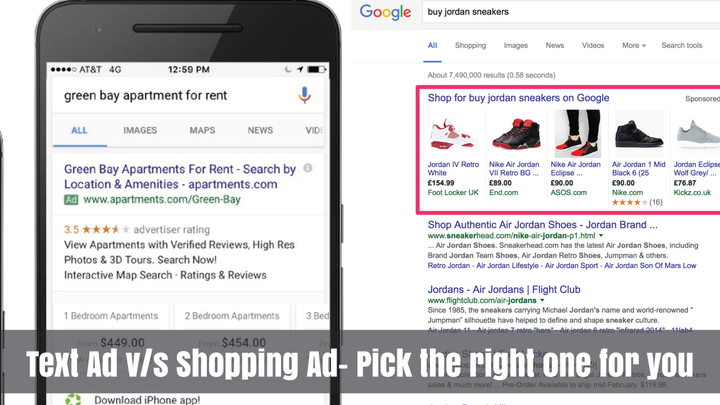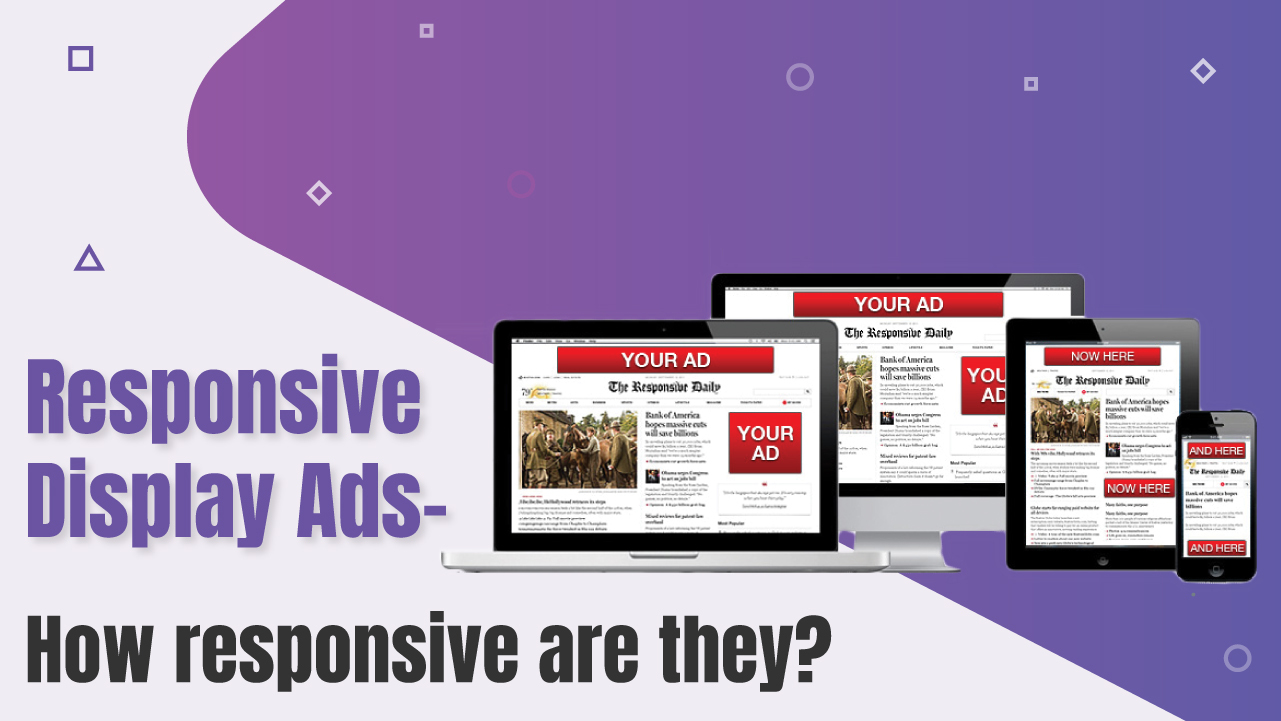Text Ad v/s Shopping Ad- Pick the right one for you

One of the biggest challenges for many businesses is understanding how to leverage the different types of Google ads. Before we start with the topic, let us first understand each element included in this. Let’s start with what a google ad is?
Google Adwords or Google Ads, is an advertising brand of Google that makes creating online ad campaigns easier and faster. These online ad campaigns are designed in a way that they deliver the best value addition to the business.
Roughly speaking the google ads can be classified into the below-mentioned types:
- Text Ads
- Responsive Search Ads
- Dynamic Search Ads
- Image Ads
- App Promotion Ads
- Video Ads
- Product Shopping Ads
- Showcase Shopping Ads
- Call-Only Ads
Although these ads may appear on the same page, the key difference lies in the way they are managed. The brands can gain significant value through an integrated approach using these ads. The text ads have high flexibility in terms of the landing page, ad copy, headlines, and keywords. Shopping ads can be a bit more rigid.
What is a TEXT-AD?
Although video & image campaigns have gained immense popularity in recent times, the efficacy of text ads is irreplaceable. It is easy to produce a text ad copy and is also less expensive. A Text Ad consists of the following:
- 3 Headlines which can have up to 30 characters each.
- A description that covers product/ service details and CTA.
- URL of the landing page to give the customer a clear idea of what they expect.
What is a SHOPPING-AD?
Even though it is just 20% of the retail paid search click, the shopping ad holds plenty of opportunities in generating sales for an e-commerce store. The algorithms pull the data off the store and craft ads automatically, matching it with the relevant search queries. This type of ad initially takes more time to set up but is a little less ongoing effort later on. A Shopping Ad consists of the following:
- Product Title within 150 characters matching the landing page.
- Product Image of 100 by 100 pixels.
- Product Description of up to 5000 words, which helps Google to decide the ad position.
- Product Price acts as a major attraction.
- Product Ratings provide significant trust to visitors.
How is a Text Ad different from Shopping Ad?
The efficiency of the ad format solely depends on the nature of the product/ service. Both of these formats can be run together as they do not exclude each other.
The shopping ad and text ad both appear on the same search result page, yet carry their differences.
- The destination URL in the text ad can be any landing page, while in the case of a shopping ad, the URL leads to the product detail page.
- Text Ads contain only text and are paid ad campaigns, while the shopping ads are free and contain images.
- Text Ads have high flexibility, while the shopping ad is a bit more rigid in a way.
- The Text Ad has three headline fields with 30 characters each, while the shopping ad has a 70 characters title field.
Shopping ads are driven by a feed that is created based on the products on the website. The products within the feed are put in groups and then bid on by the advertiser. In a shopping ad campaign, the brand must have to be more specific about the product detail page, whereas the text ads can be sent to the category landing page or product detail page.
It can be said that CTR is better in the text ad, as the advertisers get better control over the keywords. On the other hand, the benefits of a visually appealing shopping ad format can not be missed. People are more likely to engage with visual content over text-only content. The conversion rate/cost and CPC are better with shopping ads and thus can perform well for the e-commerce segment. Text ads fail here, as e-commerce merchants have a limited space to describe their products. Thus for e-commerce merchandise, an eye-catchy product image can boost the conversion even with minimal text space.
Which is better of the both- Shopping Ads or Text Ads?
Shopping ads were developed by Google specifically targeting the e-commerce advertisers, which makes sense that they perform better than Text Ads. However, some studies prove otherwise, due to which one could not just say shopping ads are inherently better. The feed-driven text ads have a high conversion rate which can be automatically created based on the information in the product feed. Shopping Ads don’t allow bidding on specific keywords while the text ad is created using the information from the feed and thus creates a perfect match between the search and product.
Understanding this, advertisers elect to use both the ad formats in their campaigns, which when done correctly aids the appearance of the SERP.
In Conclusion:
We suggest a healthy combination of text ads and shopping ads for a strong e-commerce PPC strategy. A balance of these two advertising methods can maximize the PPC results. Text ads give the customer better control while the shopping ad allows the advertiser to refine what is displayed. Playing around the right mix, an advertiser can get the best overall ROI.




